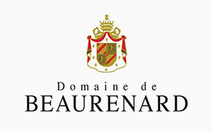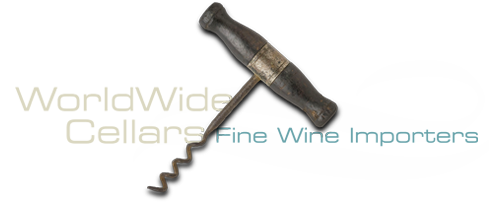Beaurenard
 Domaine de Beaurenard is a very special estate indeed. The Coulon brothers, Frédéric and Daniel, are the 7th generation to grow the fruit of the vine and it was them with whom I first became acquainted with the Domaine - nowadays, there is yet another generation at work in the vineyards and cellars, Daniel's sons Victor and Antonin.
Domaine de Beaurenard is a very special estate indeed. The Coulon brothers, Frédéric and Daniel, are the 7th generation to grow the fruit of the vine and it was them with whom I first became acquainted with the Domaine - nowadays, there is yet another generation at work in the vineyards and cellars, Daniel's sons Victor and Antonin.
Over time, the original place-name dating to 1695 - “Bois Renard” - has become “Beaurenard,” and “Boisrenard” has become the name of the domaine’s most important cuvée. The first vintage bottled by the domaine was in 1860, and the winery keeps a library of each vintage going back successively to 1929. The oldest vintage in the library is from 1880.
Gracious and elegant, hardworking men of the land, Frédéric and Daniel seem most happy in the vineyard, pruning away a stray wisp of vine, talking about viticulture. Theirs is biodynamic – no artificial ingredients. This is the key to finding an expression of terroir, according to Victor Coulon: if you kill the microorganisms and ruin the local biodiversity, the wine can no longer show a sense its place. A few years ago I jokingly asked Daniel if he talks to his vines. To my surprise, he replied that yes, in fact he does, and so do some of his neighbors (though they don’t readily admit it).
By now, the domaine encompasses 32 Hectares in Châteauneuf-du-Pape in 20 separate parcels. Some of those plots are still plowed using horses, which is much safer for the vines and doesn’t break or compact the roots. Other plots are composed 100% of the round alluvial stones, or “Galets”, so typical of this terroir. Vine age varies tremendously with some plots over 100 years old, but average vine age is 45 years and average production is 25-35 HL/ Ha.
In 1980, the domaine invested in 25 Hectares in the nearby (about an hour away by tractor) Rasteau. The same biodynamic viticultural practices apply; the microclimate is chillier as the south-facing slopes and terraces rise to between 200 and 400 meters above sea level. The soils are clay/calcarious with an underlying component of blue clays (“argiles bleues”). Yields are feeble at 30-42 HL/Ha. Vinification of the Rasteau grapes is done at the cellar in Chateauneuf. Frédéric and Daniel have built a wine-growers museum in the old cellar in Rasteau.
Vine training is entirely traditional gobelet, except for the Syrah and some indivdual plots of white grapes which are trellised. In general white and red varietals are coplanted in the vineyards, the typical “field blend”. All fruit is picked by hand, and 80-90% of the pickers return every year for the vendange. Fruit is placed into one of two baskets, with simple instructions: grapes you would eat go into the red basket. Grapes you wouldn’t, go into the black basket and those grapes go to the négoce.
The winery itself was completely renovated in 1988. In addition to the library of the wineries vintages, the brothers have additional begun a project to preserve the genetic patrimony of each of the 14 varietals that make up the “Symphony” of varietals that classically go into Châteauneuf-du-Pape. Typically about 8% of the cépage of their regular Chateauneuf-du-Pape is composed of white grapes. Yeasts are always indigenous and the fermentation starts spontaneously. Fifty percent of the winery’s production is sold at home in France.

